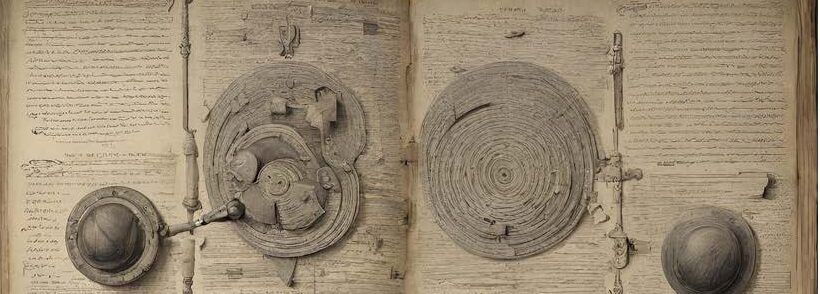
Overview
One of the earliest forms of texts are hieroglyphs, an ancient Egyptian form of writing that has left scholars and historians curious and intrigued. This form of text served as communication that dates back to 3,100 B.C., which is yet to be deciphered completely. According to Britannica, the Greek translation of hieroglyphs is “sacred carvings”, as it was also believed to be the “invention of the gods” by ancient Egyptians, where we find such inscriptions made onto walls, tombs as well as statues.
Functions
There are essentially three types of signs in hieroglyphs: logograms, phonograms as well as determinatives. Logograms are the symbolic inscriptions that represent text, and contrary to popular belief, it is not the only function of this technology. Hieroglyphs also represent sound, which is classified as phonograms, as well as determinatives, which are those inscriptions placed at the end of words to help clarify the meaning of it (Scoville, 2015). Unlike our current day literacy structures, hieroglyphs are read in different ways, ranging from top to bottom, left to right and vice versa.
The First Deciphering

A transformative revelation that helped better understand hieroglyphs was the deciphering of the Rosetta Stone, that was discovered in 1799. It is a broken piece of a bigger stone slab which had a decree about King Ptolemy in three different writings: Hieroglyphic, Demotic and Greek, as shown in figure A. Since the latter two were languages still understood by scholars, and translated to the same definition, deciphering the ancient Egyptian language became easier and was fundamentally the first step in its discovery. The Rosetta stone displays the hieroglyphic inscription in 14 lines, as shown in figure B.

Two major contributors to deciphering the Rosetta stone were the French and English, but credit was given to Jean-Francois Champollion who completely decoded almost 23 years later in 1822. Since this form of text is not completely deciphered, AI technologies are used as tools today. Fabricius is a machine learning tool dedicated to decoding hieroglyphics that reduces the laborious steps in the traditional process. According to research, this program is used by uploading a photo of the hieroglyphic text, in which Fibricus would sharpen and identify the shapes, as shown in figure C. However, this is simply just a tool that helps speed up the deciphering process, it is not automatic and needs constant interaction with philologists (Kelly et al., 2022).
Thanks to this breakthrough, the process of understanding hieroglyphs became more comprehensive. It was found that this form of text represented a variety of information, such as numbers, indication of goods as well as economic activities (Scoville, 2015). Moreover, because hieroglyphic text also existed on pottery vessels, it is believed that information related to its contents and preservation methods were printed on the vases, which eventually became standardized overtime. This may suggest that there was widespread literacy that may have caused difficulty in maintaining, therefore standardizing a form of text was essential for administrative purposes. Scholars have identified that hieroglyphs have evolved over the years and were later expressed in the form of art, especially relevant in commencements and royal achievements.

Personal Commentary
Learning about the decipherment of the Rosetta stone allowed me to reflect on my common practices in writing. The effort of combining past knowledge with collaboration to unlock the mystery of the text caught my attention. The hieroglyph inscription on the Rosetta Stone was decoded as a result of combining expertise with persistence, which proves that collaboration is essential in producing valuable work. In terms of writing practices this approach can be extended to the collaborative exploration of ideas, where utilizing different sources and areas of knowledge can contribute to enhanced levels of writing, improving its quality and depth.
The tools philologists use nowadays that help decode hieroglyphics clear misconceptions of current day technologies. Since the Fabricius tool does not entirely decipher the ancient Egyptian text, the dynamic relationship between language and technology has become more clear. It motivated me to reconsider my reading and writing habits, as I now understand that integrating these tools in my practices, and not relying on them, can enhance clarity and expression in both writing and reading activities.
——————————————————————————————————–
References:
Blakemore, E. (2021, July 16). Ancient Egypt 101. History. https://www.nationalgeographic.com/history/article/how-the-rosetta-stone-unlocked-the-secrets-of-ancient-civilizations
Everything you ever wanted to know about the Rosetta Stone. (n.d.). The British Museum. https://www.britishmuseum.org/blog/everything-you-ever-wanted-know-about-rosetta-stone
Kelly, B., Ballsun-Santon, B., Di Biase-Dyson, C., & Woods, A. (2022). Can Machine Learning Translate Ancient Egyptian Texts? Lost in Translation. https://www.sapiens.org/archaeology/machine-learning-egyptian-hieroglyphs/
Scoville, P. (2022). Egyptian Hieroglyphs. World History Encyclopedia. https://www.worldhistory.org/Egyptian_Hieroglyphs/
